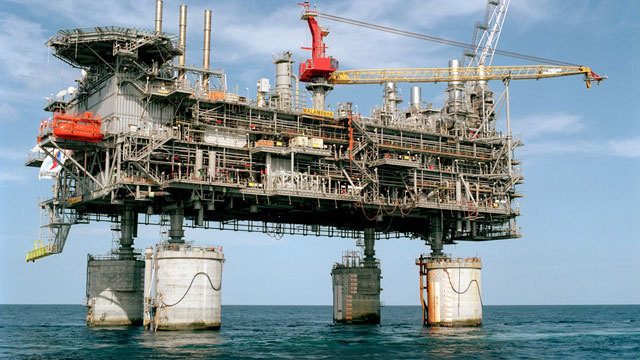SUMMARY
This is AI generated summarization, which may have errors. For context, always refer to the full article.

MANILA, Philippines – Offshore Calamian, covered by Service Contract (SC) 57, could be used by the government to build confidence for joint exploration with China in the West Philippine Sea, according to an analyst.
“I think it’s a confidence-building measure on how we can proceed to discuss how we can jointly explore Reed Bank,” Aaron Jed Rabena, an analyst and program convenor at foreign policy think tank Asia-Pacific Pathways to Progress, said in a recent Rappler Talk.
Malacañang on Friday, March 2, said it was considering two areas for joint development with China in the West Philippine Sea: offshore Calamian and Reed Bank, covered by SC 57 and SC 72, respectively. (READ: Malacañang: Two areas being considered for joint exploration with China)
“I think the government would first like to start with the Calamian [area] where there’s no dispute,” Rabena said.
Calamian is an uncontested area located north of the Malampaya oil field and northwest of Palawan block. It is beyond China’s 9-Dash Line, which it uses to claim most of the South China Sea, including the West Philippine Sea. (A 2016 Permanent Court of Arbitration (PCA) ruling, however, invalidated China’s claims in the West Philippine Sea.)
Unlike the Calamian area, Reed Bank is claimed by China. (READ: Stop calling it the ‘disputed’ West Philippine Sea – Carpio)
Similar to Malampaya?
According to Rabena, should the Philippine government pursue joint development in the areas covered by SC 57 and 72, the model for exploration here could possibly be similar to that of the Malampaya natural gas field.
“I think with this one, it is well within our area of jurisdiction – it’s the Calamian [area]; that service contract. So in that model, what would take place is the model of Malampaya,” Rabena said.
He added that with Calamian and Reed Bank within the country’s EEZ, joint exploration should work within Philippine laws. “We used to have an overlapping claim with them when the 9-Dash line was still not invalidated. But, right now, there are no overlapping claims anymore.”
In particular, Rabena cited Presidential Decree (PD) 87, wherein the maximum benefit of explorations should be received by Filipinos and the Philippine government over foreign agents.
PD 87 also states a 60%-40% division of profit out of production less the costs should be taken, with the Philippines receiving the majority.

Reed Bank, an area rich in natural resources, could hold up to 5.4 billion barrels of oil and 55.1 trillion cubic feet of natural gas, according to a report by the United States Energy Information Administration. (READ: Reed Bank ‘holds huge oil, gas reserves’)
The area is also critical in terms of helping to address the country’s energy demands. The Malampaya natural gas field, which supplies 40% of the electricity requirement of Luzon – is expected to run out of gas by 2024.
SC 72 was awarded to Forum Energy PIc, a firm led by the Manauel Pangilinan-led Philex Petroleum Corporation. According to previous reports, the firm was initially in talks with China National Offshore Oil Corporation on developing a part of the Reed Bank.
However, joint exploration and drilling surveys were stopped in 2014 as the administration of Benigno Aquino III filed the country’s case with the PCA.
‘Up to China’
But would China agree to such a setup in Reed Bank?
Rabena said it would be “up to China if they would be amenable to a 60-40 agreement where Philippine laws would govern.”
He also said China would most likely prefer to split profits equally – a scenario only possible if the law were to be amended.
“I think that they would be more amenable to a 50-50 arrangement…and I think that would only be possible if we would amend our Constitution,” he said.
In a GMA News article, however, maritime expert Jay Batongbacal warned of the consequences of jointly developing the areas with China.
“Given the present situation, simply deciding to agree to jointly develop within the area of the 9-dashed lines would benefit China, regardless of the equity/sharing formula. The Philippines would thereby be implicitly acquiescing to China’s claim to some kind of rights to share in the natural resources within Philippine jurisdiction,” Batongbacal said.
A report from China’s Ministry of Foreign Affiars website states, among its 4 elements on “setting aside dispute and pursuing joint development,” that “sovereignty of the territories concerned belongs to China.” – Rappler.com
Add a comment
How does this make you feel?
There are no comments yet. Add your comment to start the conversation.